For an overview of the process of designing surveillance, using the surveillance design framework webtool, supported by the contents of this WIKI, you can watch this short video (click on the image below). You can also just read on, as all the information discussed in the video is also pasted below.
Surveillance design framework: a short introductory video 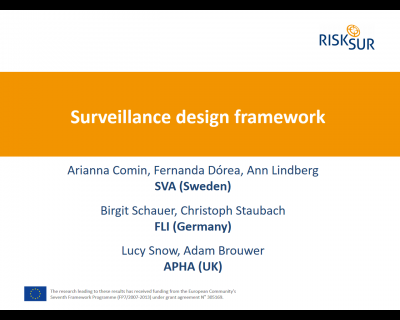
Surveillance design framework: an Introduction
The process of surveillance design is evaluation is shown schematically below. As part of the RISKSUR project (now maintained by the SANTERO consortium - http://santero.fp7-risksur.eu/), two tools were created to support the process: the surveillance design framework, and the EVA tool.
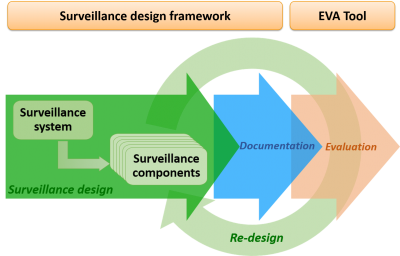
Both tools can be found at: https://survtools.org
This WIKI is a support to the surveillance design framework:
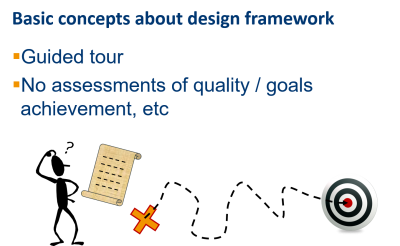
The framework is a guided tour to the process of surveillance design. The applied tool guides users through the process of gathering relevant information to successfully complete each step of surveillance design. Information in this wiki helps users understand what each step is about. Collected information can be documented into a standard report also available in the tool. The tool will NOT, however, provide any assessment of the quality of data entered by the user, or of the decisions made regarding the surveillance design. Those decisions depend on the context in which surveillance is being designed, and therefore no objective framework can take those decisions in replacement of an informed surveillance designer.
Who are those surveillance designers?
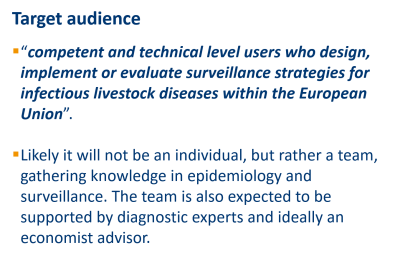
Structure of the framework
Following the definitions proposed in Hoinville et al, 2013, a surveillance system is defined as a collection of various surveillance components which are all aimed at “describing health-hazard occurrence and contributing to the planning, implementation, and evaluation of risk-mitigation actions”. The framework was therefore organised into those two levels.
As a starting point, a surveillance system should be defined as a collection of surveillance activities directed against one particular health hazard, in a specific region and a given animal population (for instance, surveillance for disease freedom documentation of Bluetongue in Germany).
After the surveillance system has been defined, all surveillance activities that contribute to that system are grouped into surveillance components, with the help of the framework:
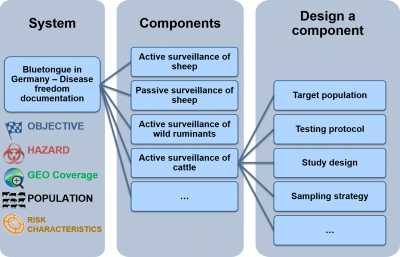
Surveillance components are then designed, individually. The picture below shows the steps of surveillance design using this framework, where steps 1 and 2 are performed at the surveillance system level (once for each system) and the remaining steps are repeated for each specific surveillance component identified.
The structure of this WIKI follows the numbering depicted below, and users can navigate quickly through the steps through the navigation menu to the right of this page (top of the page)
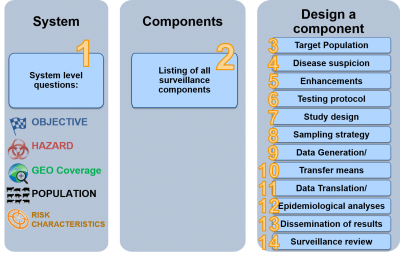
We hope you will find the support you need in this WIKI. Don't hesitate to leave us some feedback.
Members can contribute by editing the wiki and posting discussions, if you want to become a member, don't hesitate to contact us:
http://santero.fp7-risksur.eu/
Reference:
Hoinville, L. J., Alban, L., Drewe, J. A., Gibbens, J. C., Gustafson, L., Häsler, B., … Stärk, K. D. C. (2013). Proposed terms and concepts for describing and evaluating animal-health surveillance systems. Preventive veterinary medicine, 112, 1–12.











